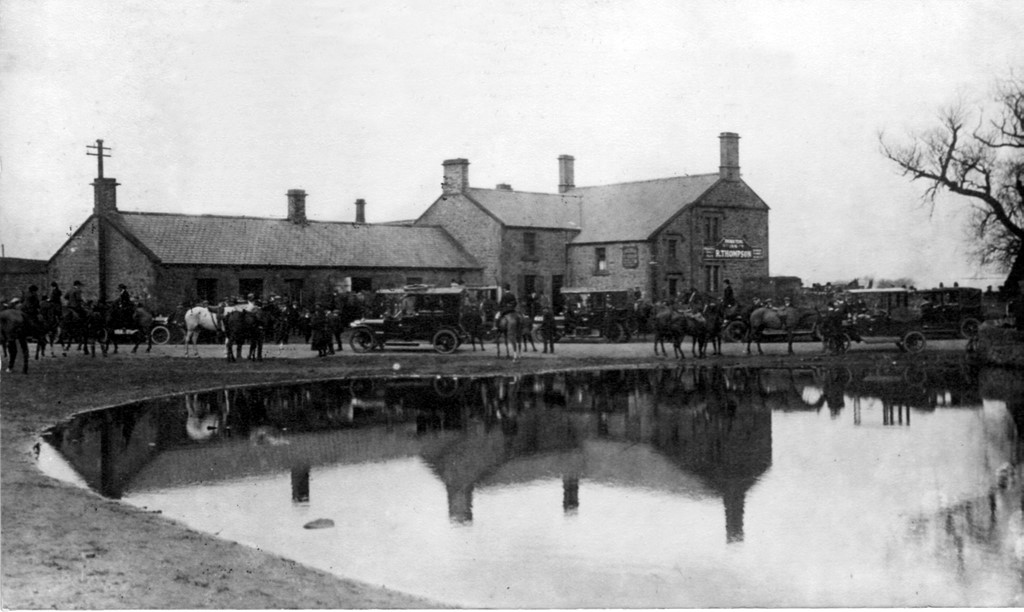Although just over 100 years ago, the world was a different place. As our timeline shows: the internal combustion engine had been invented only 15 years earlier (1886), radio had just been invented (1901) and there would be no airplanes for at least another few years. Britain was fighting the Second Boer War (1899-1902) but this probably had little impact on the lives of the people of Heddon.
In 1884, the vicar of Heddon had reported on village housing. 26 out of 64 houses only had one room. A family in one such house (16 feet by 16 feet 7 inches) had nine children. Average attendance at the village school was 133 in 1888, rising to 152 in 1891 with adoption of free education. In 1901 it was forced to close for a time due to an outbreak of diptheria.
Of the 45 people in these two terraces, 8 of the older males worked in the Colliery and 4 in the Brick Works. 22 were children, under 15.
Along with a crop of coal miners and workers in the brickworks, two properties in Blue Row were occupied by Hunters, stone masons and quarrymen.
Nearly all the working men in Heddon Square were colliery workers, described as hewers, putters, banksman and drivers.
John Snowdon (33), living in Moor Court with his wife, Mary Isabella (33, born Corbridge) and daughter, Margaret J. (4) is shown in the 1888 Census to be John senior's son. He was also employed as a Stationary Engineman.
A School Teacher, Mabel Hoyle (19, born Rye, Sussex) was boarding in The Square with a mining family headed by John Thomas Scott (35).
Although not identified as such in the Census record, the western part of Jubilee House was probably home to John Jordan (58, Joiner), wife Jane (54) and three children, one of whom, Joseph (22) was recorded as a Baker.
A house with 4 rooms, recorded just before the Vicarage, may be Ivy Cottage as its southern neighbour, Rose Cottage, was yet to be built. It was home to Ellenor Hunter (63, born Humshaugh) and her three children: William (41), Thomas (30), Richard (29), and Annie (27). Thomas is described as a Joiner, William and Richard as Stone Masons.
The family of Hugh Stephenson (22) identified as a Butcher, were providing a room for an employee, Robert Buck (22), Butchery Assistant. This makes it likely that the property recorded was the western of the houses on Hexham Road (now 'The Post House') which for a time operated as a butchery/slaughter-house from a front shop which juts onto the road.

William, aged 3 in 1901, became Lieutenant Colonel William Wilson, and now occupies a Commonwealth War Grave at El Alamein, where he died on 25 July 1942.
William Harle's first wife Margaret died and he was remarried to Mary Henderson, a 29 year old spinster, in 1903, with whom he had three more children (Stanley, Muriel and Ridley). In the 1911 Census he is recorded as Station Master at Appleby in Westmorland. He is known to have died in Newcastle in 1913.














 RSS Feed
RSS Feed
